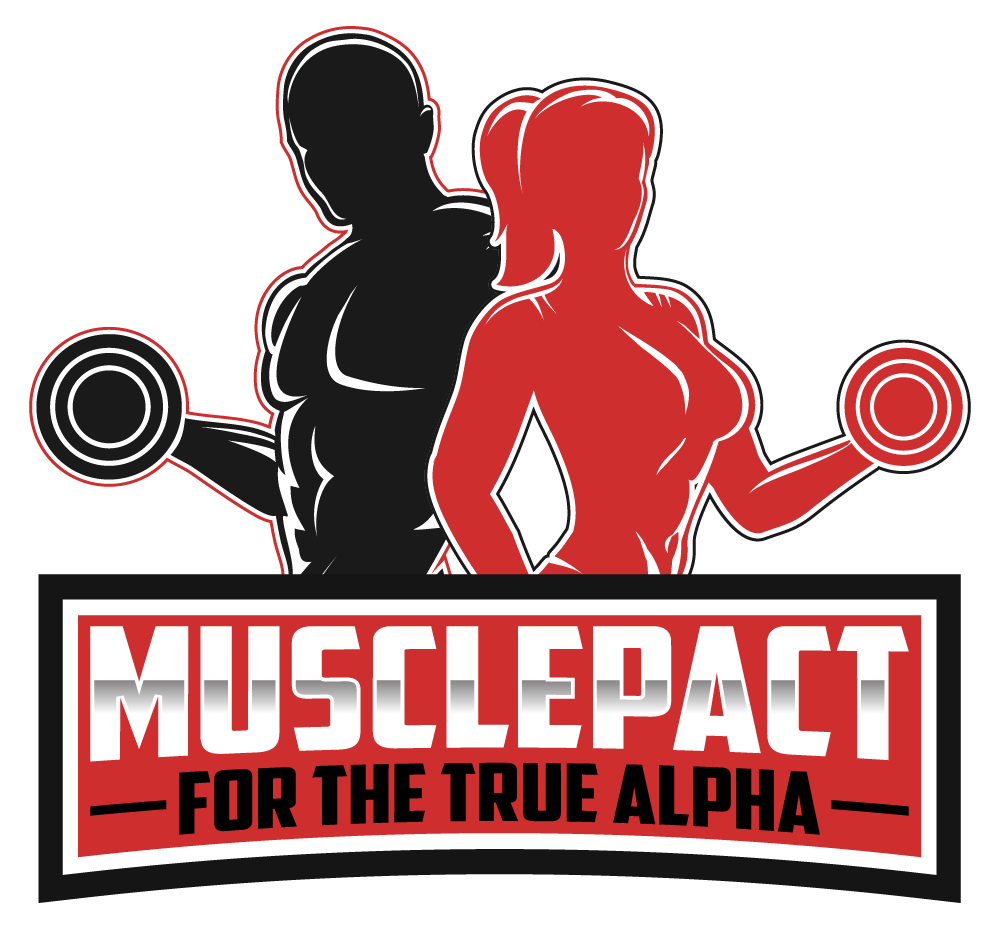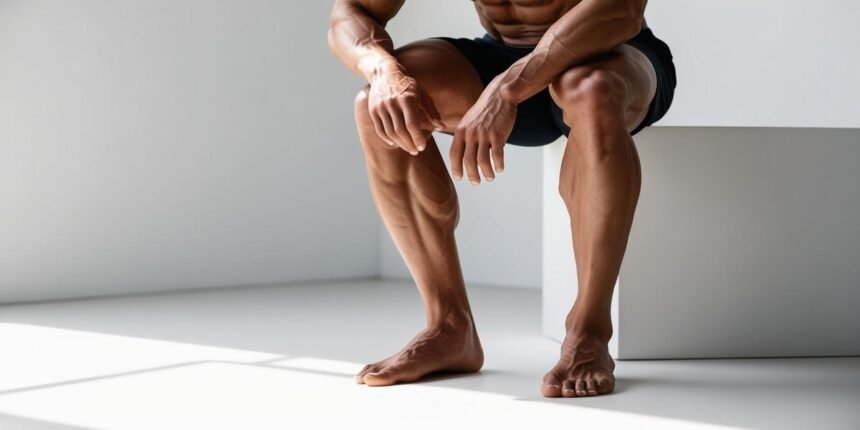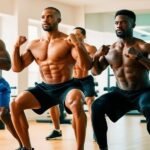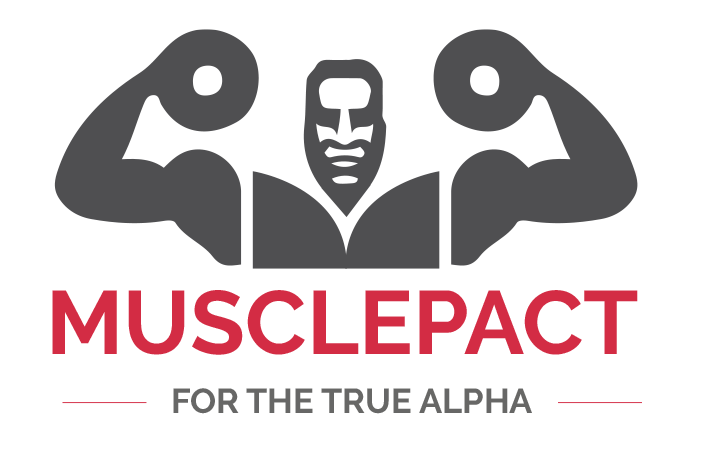The human body is an engineered masterpiece; it is a complex blend of parts allow us to move, be strong, and function overall. One of the most important parts of this system is the muscle, specifically the leg muscle, which consists of more than 15 separate muscles in each leg that work together to propel us with every step, hop, and stride. Our muscular legs take a lot of wear and tear throughout the day, from even the simplest functions like stepping on a curb to complex athletic movements. We rely on them to walk, run, jump, bend, and everything in between.
Knowledge of these muscles, their mechanics, and how to keep them well-functioning is fundamental to general mobility, fitness, and health. Our guide will break down leg muscles, what they do, their anatomy, potential injuries, and the best way to strengthen and maintain them.
Anatomy of the Leg Muscles

Leg muscles are divided into those of the upper leg and those of the lower leg, and they provide a different role in your movement and stability.
Upper Leg Muscles
The thigh possesses some of the body’s largest and most powerful muscles, which generate force and maintain posture. They are indeed the backbone for upper and lower-body movements such as walking, running, jumping, and squatting. We had the following muscles in the upper thigh:
- Quadriceps: The quadriceps on the front of the thigh consists of four individual muscles: rectus femoris, vastus lateralis, vastus medialis, and vastus intermedius. Together, these muscles are responsible for knee extension (straightening of the leg). In addition to knee extension, the rectus femoris also plays a role in hip flexion, which involves lifting the leg.
- Hamstrings: Located at the back of the thigh, the hamstrings are composed of three muscles, the biceps femoris, semitendinosus, and semimembranosus. These muscles flex the knee to bend the leg, and extend the hip to help push off the ground when running.
- Adductors: The adductor group consists of five muscles located on the inner thigh: adductor longus, adductor brevis, adductor magnus, gracilis, and pectineus. These muscles are responsible for adducting the leg toward the midline of the body. It also assists in the hip flexion and rotation.
- Iliopsoas: The Iliopsoas is a deep muscle in the hip and lower back; it is a strong hip flexor. This muscle raises the leg or bends the hip. It is essential for walking, running, and climbing stairs.
- Gluteals: Technically part of the hip, the gluteal muscles (gluteus maximus, gluteus medius, gluteus minimus) can be regarded as major contributors to overall leg function as well. With the gluteus maximus being the largest muscle in the body, it has a role in hip extension, external rotation, and abduction. The gluteus medius and minimus are the muscles are important for hip abduction and pelvic stabilization during walking and running.
Lower Leg Muscles
The lower leg of the calf, which provides a supporting system to the ankle and foot, helps us to stand, walk, and balance. The major lower leg muscles include:
- Gastrocnemius: The most superficial of all calf muscles, located on the back of the lower leg. The primary roles are ankle plantarflexion (pointing of the toe) and knee flexion.
- Soleus: Located beneath the gastrocnemius, the soleus is another significant calf muscle. Its main functions are ankle plantarflexion and stabilization (in standing and walking).
- Tibialis Anterior: Located in the front of the lower leg, the tibialis anterior is responsible for ankle dorsiflexion and helps you to lift your toes towards your shin. It helps with the inversion of the foot, which is to turn the sole of the foot inward.
- Peroneals: Found on the outside of your lower leg, the peroneals include three muscles: the peroneus longus, peroneus brevis, and peroneus tertius. They help with eversion, turning the sole of the foot outward, and plantarflexion and dorsiflexion of the ankle.
Synergy of Leg Muscles
Leg muscles do not work in isolation; they move together, working in concert with one another to provide smooth, effective movement. For instance, the rectus femoris is one of the quadriceps that helps extend the knee but also assists in flexing the hip. Equally, the gastrocnemius, a knee flexor muscle that helps the hamstrings with knee flexion, is a major calf plantar flexor muscle.
This interaction demonstrates the harmonious nature of the leg muscles in action and stresses the significance of developed muscular legs. If one muscle is weak or lacking, the balance in synergy breaks down, and the weak muscles will cause compensatory movements, resulting in injuries to other parts of the leg or even the body.
Common Leg Muscle Injuries

Like all muscles, leg muscles are at risk of injury, especially if overused or overexerted. Muscle strains, also sometimes called “pulled muscles,” are some of the most common leg muscle injuries.
A muscle strain means that muscle fibers are either stretched or torn. Depending on how severe the injury is, strains are categorized as follows:
- Grade 1 Strain: Few muscle fibers are torn. The signs that accompany it are usually mild pain, tenderness, and stiffness.
- Grade 2 Strain: A moderate strain consisting of a greater number of damaged muscle fibers. The extent can vary in severity, with some experiencing moderate pain, swelling, bruising, and a limited range of motion.
- Grade 3 tear: The worst type of strain where the muscle has been completely, or almost completely, torn. Typical symptoms include severe pain, swelling, bruising, a palpable gap in the muscle, and major loss of function.
Other common injuries to the leg muscles include:
- Muscle Spasms: A sudden, involuntary contraction of a muscle that may occur from dehydration, electrolyte imbalances, or fatigue.
- Contusions: Direct trauma to the muscle, causing bleeding within the tissue and bruises.
- Tendinitis: Refers to inflammation of a tendon that may be a result of overuse or repetitive motions. Examples include Achilles tendinitis (the irritation of the Achilles tendon) and patellar tendinitis (the irritation of the patellar tendon).
- Compartment syndrome: Increased pressure in a muscle compartment impairs blood flow and function of the nerves.
Prevention and Treatment of Leg Muscle Injuries
The combination of proper training techniques to prevent leg muscle injuries includes warm-up, cool-down, stretching, and strengthening exercises:
- Warm-up: A good warm-up allows muscles to reach the appropriate temperature through increased blood flow, improving flexibility. Light aerobic activity, such as jogging or cycling, followed by dynamic stretches that mimic the movements in the upcoming activity, should serve as a warmup.
- Cool-down: Just like the warm-up, a cool-down helps the muscles to recover properly after the activity by gradually lowering the heartbeat and encouraging fresh blood flow. The cool down should consist of some light aerobic exercise and then static stretches where each stretch is held for 20-30 seconds.
- Stretching: Incorporating stretching into your routine helps you maintain flexibility and prevent strains and other injuries. Concentrate on stretching every large muscle group in the legs, including the quads, hamstrings, adductors, calf muscles, and hip flexors.
- Strengthening: These exercises work on muscle strength and endurance, making the muscle tissues much less prone to injury. Choose exercises involving all the major leg muscle groups, including squats, lunges, deadlifts, calf raises, and hamstring curls.
- Proper Form: Maintaining proper form during your exercise and activities can limit the pulling and strain on your muscles and joints, which can help prevent injuries.
- Rest: Proper recovery time in between workouts is essential to avoid overuse injuries.
Leg muscle injury Treatment for leg muscle injuries usually involves Rest, Ice, Compression, and Elevation (RICE). You can also use nonprescription pain relievers, including ibuprofen or naproxen, to relieve pain and inflammation. More severe cases may even require physical therapy or surgery.
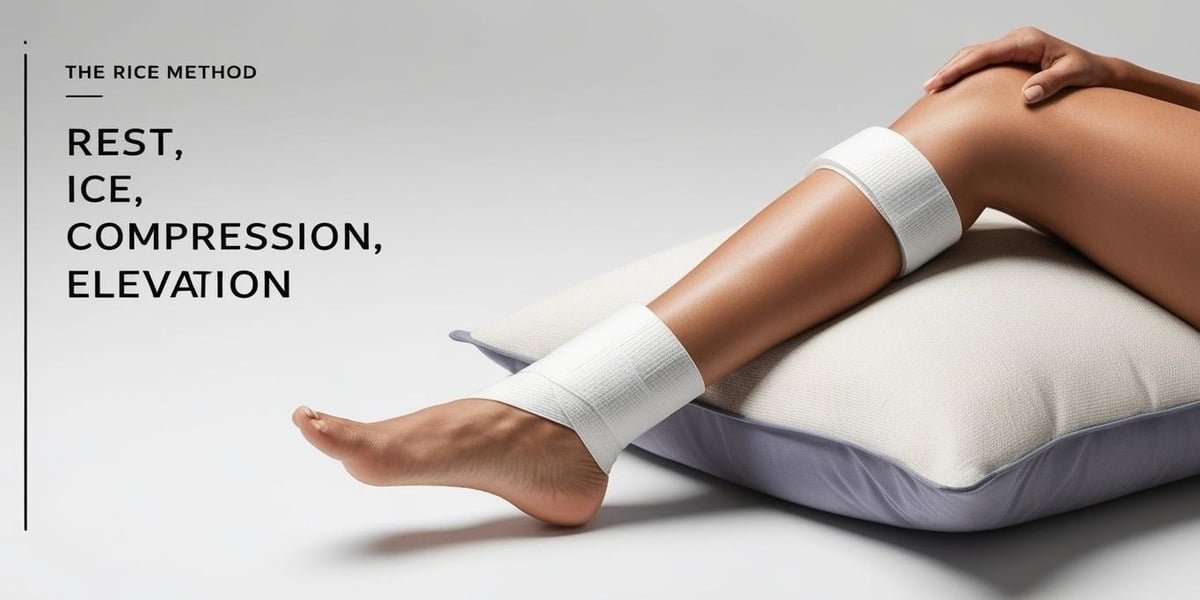
If you are experiencing severe pain, swelling, or loss of function in your muscular legs, seek the professional help of your doctor or physical therapist.
Muscular Legs Workout Basics
Maintain regular workouts for strong, healthy, powerful, and durable muscle functions in the legs. The below exercises will activate those primary leg muscles:
- Squats: Squats are a compound exercise that works the quadriceps, hamstrings, glutes, and calf muscles.
- Lunges: Lunges are another compound exercise that works the quadriceps, hamstrings, and glutes.
- Deadlifts: Deadlifts are a powerful exercise that works the hamstrings, glutes, and lower back.
- Calf Raises: Calf raises target the gastrocnemius and soleus muscles in the calf.
- Hamstring Curls: Hamstring curls isolate the hamstring muscles on the back of the thigh.
- Leg Extensions: Leg extensions isolate the quadriceps muscles on the front of the thigh.
- Leg Press: The leg press is a machine exercise that works the quadriceps, hamstrings, and glutes.
- Glute Bridges: Glute bridges target the gluteus maximus and hamstrings.
- Side Leg Raises: Side leg raises target the outer hip’s gluteus medius and minimus muscles.
Stretches for Muscular Legs

Stretching regularly can help you keep your muscular legs flexible and maintain the range of motion of your joints. Thus, you can reduce your risk of injury. Here are the below stretches that cover the leg’s main muscle groups:
- Quadriceps Stretch: Stand upright and grab your foot behind you, pulling it towards your buttock. Hold for 20-30 seconds.
- Hamstring Stretch: Sit on the floor with your legs extended. Reach forward towards your toes, keeping your back straight. Hold for 20-30 seconds.
- Calf Stretch: Stand facing a wall and place your hands on the wall for support. Step one foot back, keeping your heel on the ground. Lean forward until you feel a stretch in your calf. Hold for 20-30 seconds.
- Hip Flexor Stretch: Kneel on one knee with the other foot flat on the ground in front of you. Gently push your hips forward until you feel a stretch in your hip flexor. Hold for 20-30 seconds.
- Groin Stretch: Sit on the floor with the soles of your feet together. Gently push your knees towards the floor until you feel a stretch in your groin. Hold for 20-30 seconds.
Final Thoughts on Getting Muscular Legs
The leg muscles are essential for movement, stability, and overall function. Understanding their anatomy, function, potential injuries, and effective strategies for strengthening and maintaining them is crucial for maintaining optimal movement, fitness, and overall health. By incorporating regular exercise, stretching, and proper techniques into your routine, you can keep your leg muscles strong, healthy, and injury-free, allowing you to enjoy a lifetime of mobility and activity.
Before you go, check this gym abs workout to sculpt your core. Also, follow us on Facebook for even more fitness guides.
Source:
- www.hss.edu/article_guide-to-leg-muscles.asp
Images are AI genearted with canva.com
